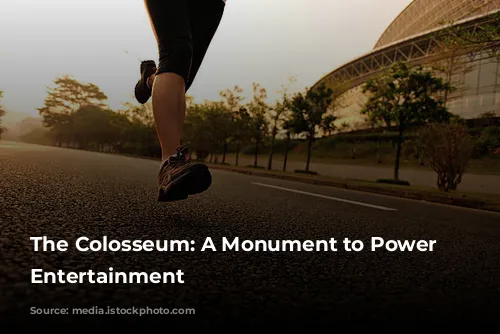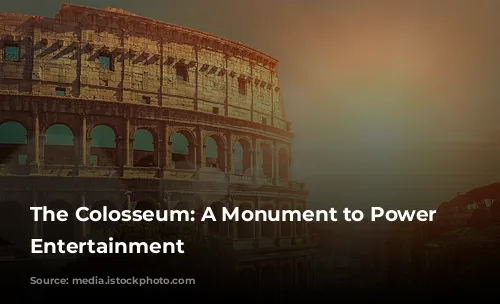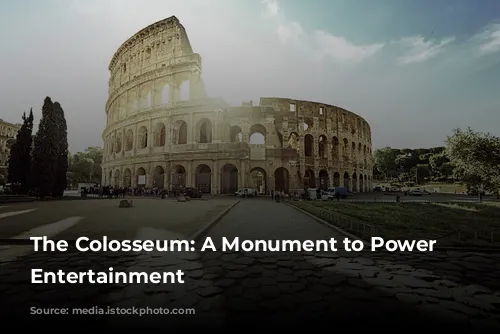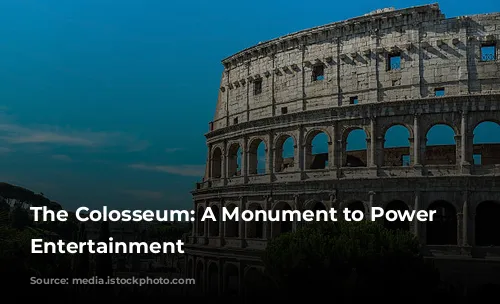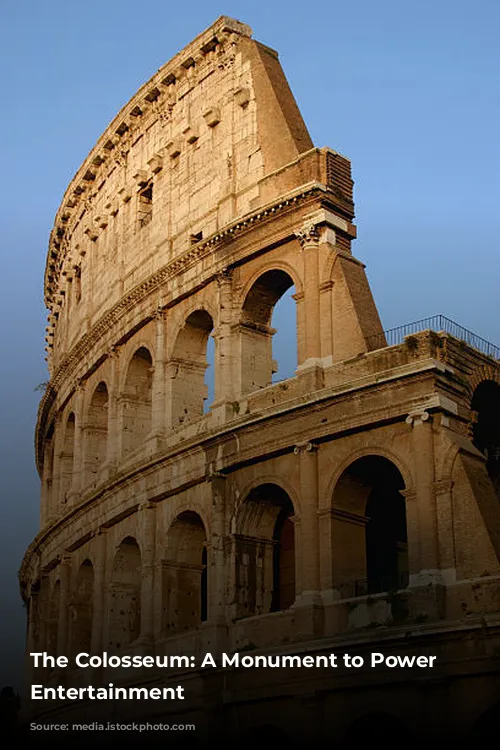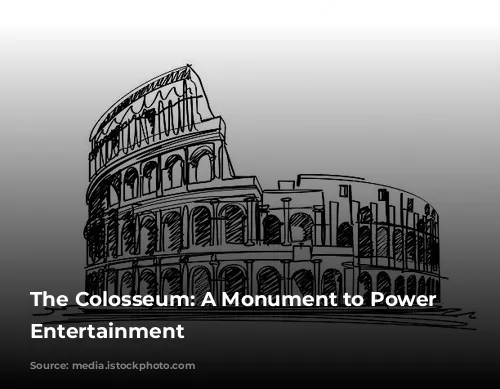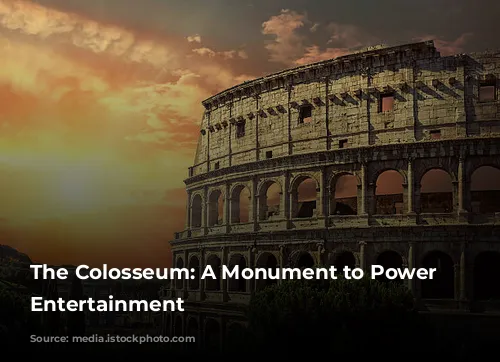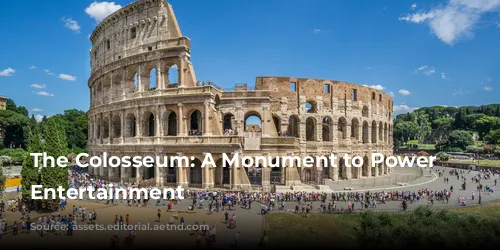The Colosseum, also known as the Flavian Amphitheater, stands as a majestic testament to the grandeur of ancient Rome. This awe-inspiring structure, erected in the first century A.D., is synonymous with gladiatorial combat, wild animal spectacles, and the raw power of the Roman Empire. But beyond its bloody history, the Colosseum remains a remarkable feat of architecture and engineering that continues to captivate us today.

A Monument to a Dynasty’s Resurgence
Following the turbulent years of fire, plague, and civil war, the Flavian Dynasty, led by Emperor Vespasian and his sons, Titus and Domitian, embarked on a massive rebuilding project to restore Rome to its former glory. Their ambitious plans included the construction of new buildings, statues, and monuments throughout the city. In 70 A.D., Vespasian commissioned the construction of a grand new amphitheater in the city center, its funding drawn from the spoils of the Roman conquest of Jerusalem during the First Jewish-Roman War. Dedicated a decade later, the Colosseum served as a powerful symbol of Rome’s rebirth, showcasing the dynasty’s might and their commitment to the city’s rejuvenation.

An Architectural Masterpiece
The Colosseum was a revolutionary achievement in architecture and engineering, a testament to the ingenuity of ancient Roman builders. This gargantuan structure, the largest and most intricate permanent amphitheater of its time, was built using millions of cubic feet of concrete, travertine, marble, stone, and timber. Towering 157 feet high—roughly the height of a 15-story building—it could accommodate an estimated 50,000 to 80,000 spectators. The Colosseum was a masterpiece of its era, a symbol of Roman ingenuity and technical prowess.
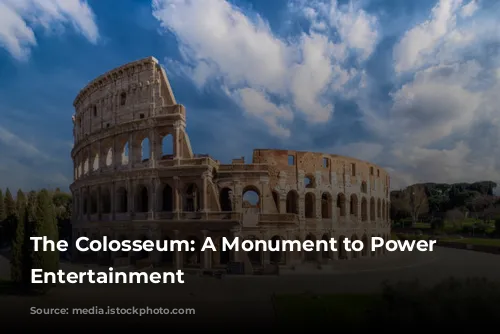
A City Within a City
The Colosseum was more than just an arena; it was a complex and sophisticated urban environment within itself. It was designed to reflect and reinforce the rigid social hierarchy that defined Roman society. The structure was built on the site of Nero’s lavish estate, Domus Aurea, featuring an artificial lake and a colossal bronze statue of Nero himself. The Flavian Dynasty, determined to erase Nero’s legacy and establish their own dominance, filled in the lake to construct the Colosseum, cleverly linking their monument to the former emperor’s extravagance.
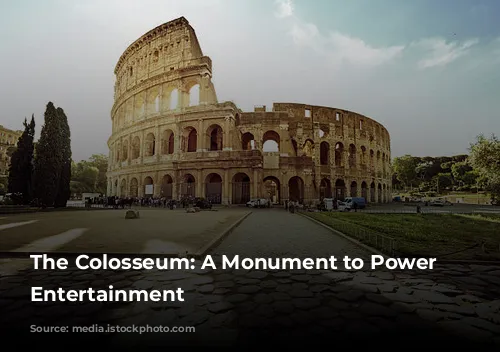
A Stage for Social Order
The Colosseum’s seating arrangement was meticulously designed to reflect the social and economic status of its patrons. The most privileged seats, closest to the action, were reserved for the Emperor and the powerful senators. Above them sat the Equestrian order, a wealthy group composed of merchants, artisans, and bureaucrats. The vast majority of Rome’s population—women, foreigners, and the poor and enslaved—were relegated to the upper tiers, a stark reminder of the social divisions that permeated Roman life.
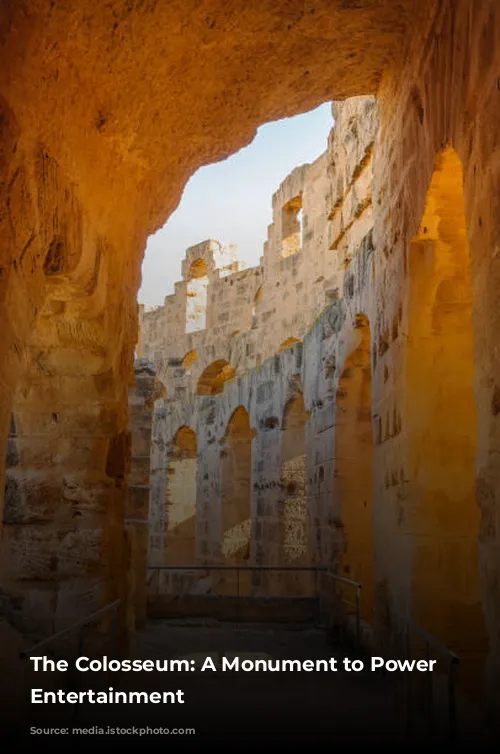
A Masterful Engineering Feat
The Colosseum’s architectural innovation extended beyond its sheer size and grandeur. The structure’s ingenious design incorporated a sophisticated drainage system to handle water used in mock naval battles staged in the arena. A retractable awning, operated by a team of sailors, shielded spectators from the harsh Roman sun and rain. The complex network of tunnels and chambers beneath the arena floor, known as the hypogeum, housed props, scenery, and participants when not in action. The arena itself featured a series of intricate trapdoors, pulleys, and lifts that allowed for dramatic entrances of combatants and scenery, including the seemingly magical appearance of elephants.
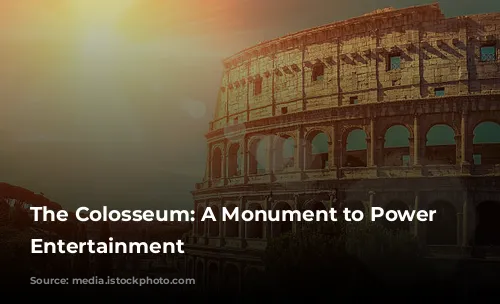
A Legacy of Inspiration
The Colosseum stands as a powerful testament to the ingenuity and power of the Roman Empire. It serves as a window into the past, offering insights into ancient Roman society, architecture, and entertainment. The Colosseum’s innovative use of arches, its elliptical shape, and its organized seating system have inspired countless modern sports stadiums and arenas around the world. Its lasting legacy ensures that the Colosseum will continue to captivate and amaze generations to come.
